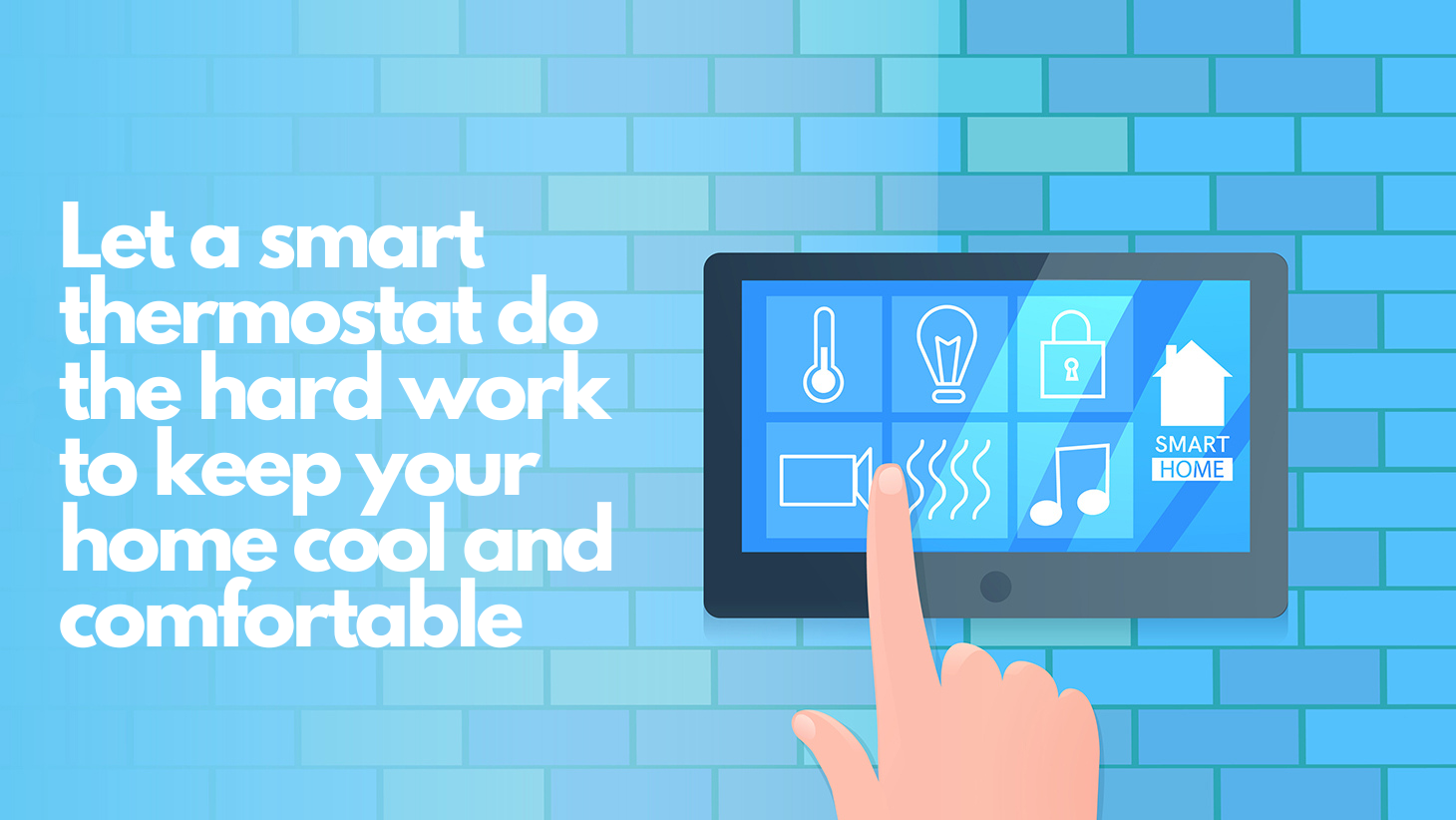
Baby, it’s hot outside! No doubt, your air conditioner is running more often to keep your home cool and comfortable.
In the average Georgia home, about 50 cents of every dollar spent on electricity is for climate control. That cost can push even higher during extreme temperatures — unless you know one of the secrets for maximizing energy efficiency, saving on electricity bills and enhancing home comfort. It’s the humble thermostat.
The better your thermostat is, the more efficiently your HVAC system will operate.
The better your thermostat is, the more efficiently your heating, ventilation and air conditioning (HVAC) system will operate. Is your thermostat all that it can be?
As a thermostat ages, it’s efficiency drops. It becomes less and less able to accurately detect the temperature levels in your home. The dead zone — that temperature range where the thermostat should activate, but doesn’t — gradually becomes wider and wider. The worn-out unit’s poor performance will both affect your comfort levels and cost more in electricity to operate.
The average thermostat survives about 10 years before needing replacement.
The average thermostat survives about 10 years before needing replacement, according to HVAC pros. If it’s time to give your climate control system an upgrade, think about investing in a smart thermostat. It provides greater control and less power consumption through intelligent management of your home’s temperature.
Our favorite features
Today’s smart thermostats aren’t just control panels for cooling and heating. These sophisticated gadgets are equipped with Wi-Fi, sensors, advanced programming and other features that enhance comfort, convenience and savings.
Walton EMC energy advisors list these favorite features found in this year’s top-rated smart thermostats:
1.Easy peasy
You can forget about manual adjustments. Smart systems learn your temperature preferences and habits, so climate control is taken care of for you. A geo-fencing feature (on some models) allows your smart thermostat to know when you’re on the way home and automatically adjusts your home’s temperature in time for your arrival.
2. Money-saving insight
The unit will track your energy usage and provide a customized report that tells you how and when you’re using energy and where you can cut back. Nest, the top-selling smart thermostat on the market, predicts you will save 15% on cooling costs and 10 to 12% on heating costs when you follow the recommendations. Other smart thermostat manufacturers have similar projections.
3. User-friendly control panel
Unlike older model thermostats, today’s smart offerings have full-color LCD displays, so it’s easy to read menus, see icons – or just read the temperature. There’s no more squinting at small numbers on poorly lit screens or puzzling over which buttons to press to access different menus.
4. Precision
Smart thermostats can achieve exact temperatures. Since every degree impacts energy usage, precision means more savings. Manual thermostats have been shown to have up to a five-degree margin of error.
5. Remote control
There’s an app for your mobile device, so you don’t need to be home to adjust the temperature. You can check or change your thermostat from anywhere you have a data or Wi-Fi connection. This comes in handy if you want to adjust the temperature before arriving home from work or while on vacation.
6. Motion detection
Many models are equipped with movement sensors that detect when you’re up and moving around the house. The thermostat adjusts cooling and heating to maximize comfort when there’s activity in the home.
7. Digital assistant compatibility
Can’t pull yourself away from the “American Idol” results show? Good news: Some smart thermostats are compatible with voice command technology, like Amazon’s Alexa, allowing you to make temperature adjustments by simply speaking.
8. Weather tracking
Some models can track the latest local weather reports and make timely adjustments in response to increases or decreases in outside temperatures.
9. System alerts
Need a reminder to change the air filter? Some models help you stay on top of HVAC maintenance, with sensors monitoring the air filter and checking various equipment parts in need of repair or replacement.
10. Longer lifespan
A smart thermostat improves HVAC system efficiency. By suffering less wear and tear, the system lasts longer and less time and money is spent on repairs.
11. Room sensors
An optional add-on for some models, these inexpensive wireless sensors can help eliminate hot or cold spots. These remote sensors give real-time signals about the temperature in various rooms and relay the information to the main thermostat, allowing for better control over the cooling and heating of underserviced areas.
On average, a quality smart thermostat will pay for itself in energy savings within two years. Do your homework about what each model offers before investing in one. A good place to start is the Consumer Reports review (Link: https://www.consumerreports.org/smart-thermostats/best-smart-thermostats-of-the-year-a4768074255/) of the best smart thermostats available in 2022.
MORE
Heat Pump Thermostat – Guide to Buy The Right Thermostat